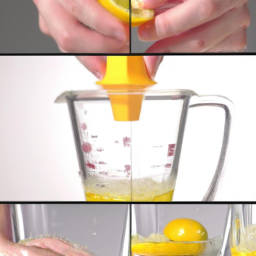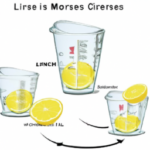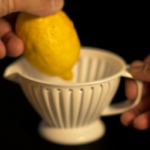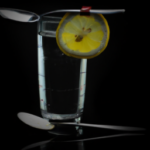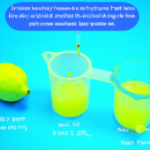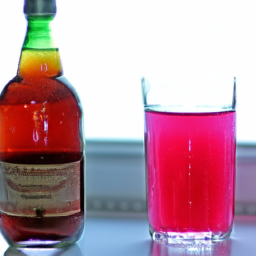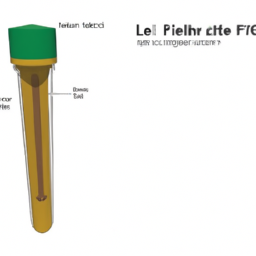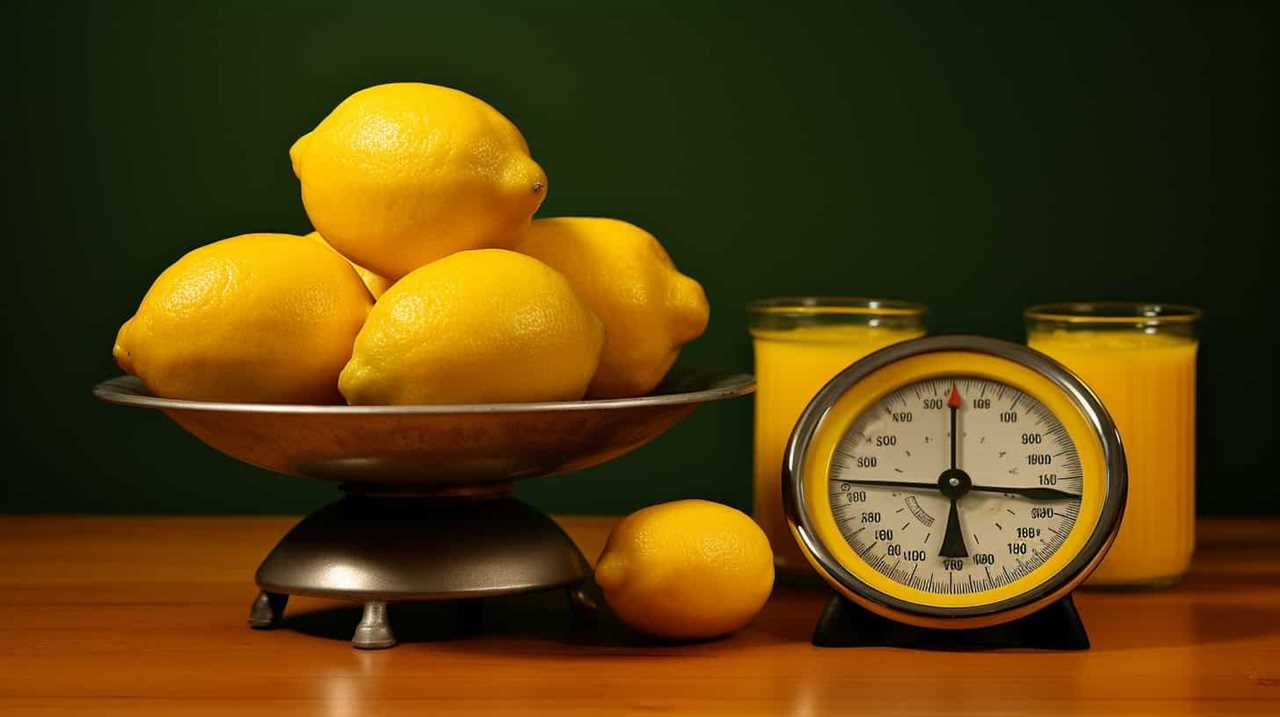Lemons are similar to snowflakes – no two are exactly alike. Differences in size, shape, and juice levels make it a challenge to estimate the amount of juice you’ll get from each lemon. As a avid user of lemon juice in my cooking, I am constantly seeking to know the precise quantity of juice a single lemon can produce. This inquisitiveness led me to carry out studies and trials to determine: what is the maximum amount of lemon juice that can be squeezed from one lemon?
In this article, I will share my findings on the variations in lemon size and juiciness, the general rule of thumb for juicing lemons, and how to measure lemon juice in tablespoons or cups. I will also provide tips for extracting the most juice from your lemons and storing lemon juice for later use.
Additionally, I will discuss using bottled lemon juice as a substitute and adjusting lemon juice measurements for recipes. Finally, I will touch on other uses for lemon juice beyond cooking and baking. So, let’s get started!
Key Takeaways
- Variations in flavor and acidity impact the amount of juice a lemon yields.
- An average lemon contains 2-3 tablespoons of juice, and 1 fluid ounce of lemon juice equals 2 tablespoons.
- Measuring by weight ensures accuracy, and using a good quality citrus squeezer saves time and effort.
- Proper storage preserves freshness and extends shelf life, and freshly squeezed lemon juice lasts up to a week in the fridge.
Understanding the Variations in Lemon Size and Juiciness
It’s tricky to determine how much lemon juice equals a whole lemon because the size and juiciness of lemons can vary greatly, making it hard to establish a standard measurement.
Variations in flavor and acidity are among the differences between lemon types, which can also impact the amount of juice they yield. For instance, Meyer lemons are sweeter and less acidic, which means they might not provide as much juice as a tart and tangy Eureka lemon.
Factors affecting juiciness include climate, ripeness, and storage. Lemons grown in warmer climates tend to be juicier than those grown in cooler areas. Additionally, the riper the lemon, the more juice it will contain. Proper storage can also impact how juicy a lemon is – keeping them at room temperature can help them retain moisture.
All of these factors make it difficult to determine an exact measurement for how much juice one lemon will yield.
Despite these variations, there is a general rule of thumb for juicing lemons. The average lemon usually contains about 2-3 tablespoons of juice. However, it’s always best to have a few extra lemons on hand, just in case you need more juice than expected.
The General Rule of Thumb for Juicing Lemons
You can typically judge how much to squeeze out by feeling the weight of the fruit. A good rule of thumb is that one medium-sized lemon will yield about 2-3 tablespoons of juice. However, this can vary depending on the ripeness and juiciness of the lemon. If the lemon is very ripe and juicy, it may yield more juice than a less ripe lemon.
If you don’t have fresh lemons on hand, there are alternative methods and lemon juice substitutes you can use. Bottled lemon juice can be a good substitute, but be sure to check the label to make sure it’s 100% pure lemon juice and not a blend of other juices or additives. You can also use other citrus fruits like limes or oranges as a substitute for lemon juice. When using these substitutes, keep in mind that the flavor may be slightly different than using fresh lemon juice.
Now that we know how to judge how much juice to squeeze out, let’s move on to measuring lemon juice in tablespoons.
Measuring Lemon Juice in Tablespoons
To accurately measure the tart and tangy flavor of this citrus fruit, simply squeeze the juice into a measuring spoon until it reaches the desired tablespoon amount. Converting ounces to tablespoons can be a bit tricky, but with a little bit of math, it becomes quite easy. One fluid ounce of lemon juice is equal to approximately two tablespoons. Therefore, if you need four tablespoons of lemon juice, you will need to squeeze two fluid ounces of juice from the lemon.
Measuring lemon juice by weight is another way to ensure accuracy when making recipes that require precise measurements. One medium-sized lemon typically yields about two tablespoons of juice, or approximately one fluid ounce. If you are using a kitchen scale to measure the weight of the lemon juice, keep in mind that one fluid ounce of lemon juice is equal to approximately 30 milliliters, which weighs approximately 28 grams. By measuring the weight of the lemon juice, you can be more precise in your measurements and avoid over or under-squeezing the lemon. Moving forward, let’s explore how to measure lemon juice in cups.
Measuring Lemon Juice in Cups
When it comes to measuring lemon juice in cups, two popular options are using a citrus squeezer or a handheld juicer. Personally, I prefer using a handheld juicer as it allows for greater control over the amount of juice extracted and minimizes the risk of getting seeds in the juice.
However, a citrus squeezer can be a more efficient option for those needing to extract a larger amount of juice quickly.
Using a Citrus Squeezer
Using a citrus squeezer can make it much easier to extract all of the juice from a lemon. It’s important to start by cleaning the squeezer thoroughly to avoid any contamination.
Once the squeezer is clean, cut the lemon in half and place it cut-side down into the squeezer. Squeeze the handles together until all of the juice has been extracted. This method ensures that you get the maximum amount of juice from each lemon without any seeds or pulp.
When it comes to choosing the best citrus squeezer brands, there are many options available in the market. Some of the popular brands include OXO, Chef’n, and Bellemain. These brands offer high-quality and durable squeezers that are designed to extract juice efficiently. Additionally, they come in various sizes and shapes to accommodate different types of citrus fruits.
Using a good quality citrus squeezer can not only make your juicing process easier, but it can also save you time and effort.
Using a handheld juicer is another great option for extracting lemon juice. However, it requires a bit more effort and can be messy if not done properly.
Using a Handheld Juicer
A handheld juicer is like a mini workout for your arms, but the end result is a burst of tangy flavor in your recipes. To use a handheld juicer, follow these steps:
-
Choose Lemons: Select lemons that are ripe, firm, and juicy. The best lemons for juicing are those that have a thin, smooth skin and are heavy for their size. Avoid lemons that are wrinkled or have soft spots as they may not yield as much juice.
-
Cut Lemons: Cut the lemons in half crosswise with a sharp knife. Make sure the cut is straight and even to get the most juice out of the lemon.
-
Juice Lemons: Place the cut side of the lemon down into the juicer and squeeze the handles together firmly. Turn the lemon and repeat the process until all the juice has been extracted.
-
Cleaning Juicer: To clean the juicer, remove any remaining seeds and pulp and rinse the juicer under running water. Dry it thoroughly before storing it away.
By following these steps, you can extract all the juice from your lemons with minimal effort. Now, let’s move on to some tips for extracting the most juice from your lemons.
Tips for Extracting the Most Juice from Your Lemons
To get the most juice out of your lemons, you’ll want to roll them firmly on a countertop before cutting them in half. This helps break down the membranes inside the lemon, which makes it easier for the juice to flow out.
Once you’ve rolled the lemon, cut it in half and use a citrus juicer to extract the juice. A handheld juicer is a great option, but you can also use a fork or a pair of tongs to squeeze the lemon over a bowl. Be sure to rotate the lemon as you squeeze it to get as much juice out as possible.
If you’re looking for alternatives to lemon juice or creative ways to use leftover lemon rinds, there are plenty of options. You can use lemon zest in recipes that call for lemon juice, or you can use the rinds to make a fragrant and refreshing lemon water.
Simply add the rinds to a pitcher of water and let it sit in the refrigerator for a few hours. The result is a lightly flavored water that’s perfect for staying hydrated on a hot day.
When you’re done juicing your lemons, be sure to store the juice properly so that you can use it later on.
Storing Lemon Juice for Later Use
When you’ve got leftover lemon juice, it’s important to store it properly to preserve its freshness and extend its shelf life. The best way to store lemon juice is to put it in a clean, airtight container and keep it in the refrigerator. Make sure to use a container with a tight-fitting lid to prevent air from getting in and oxidizing the juice. Oxygen is the main culprit behind the sour taste and unpleasant odor that develop in lemon juice over time.
Before storing the lemon juice, it’s a good idea to label the container with the date you squeezed the lemons. This way, you can keep track of how long the juice has been in the fridge and avoid using it past its prime. Freshly squeezed lemon juice can last up to a week in the refrigerator, but it’s best to use it within a day or two to ensure optimal flavor.
If you need to store lemon juice for longer than a week, consider freezing it in an ice cube tray and transferring the cubes to a freezer-safe container. When you need lemon juice for a recipe, simply thaw a few cubes in the fridge overnight.
When it comes to using bottled lemon juice as a substitute, keep in mind that the flavor won’t be as fresh and vibrant as freshly squeezed juice. However, it can be a convenient option when you don’t have fresh lemons on hand or need a consistent flavor profile for a recipe. Just be sure to check the label and avoid products that contain added sugar or preservatives.
Using Bottled Lemon Juice as a Substitute
As mentioned earlier, storing lemon juice can be a great way to have it available for later use. However, sometimes it may not be possible to squeeze fresh lemons every time you need lemon juice. In such cases, bottled lemon juice can be a good substitute.
Using bottled lemon juice has its benefits and drawbacks. On the one hand, it’s convenient and readily available. You don’t have to worry about squeezing lemons or storing the juice. Moreover, bottled lemon juice is consistent in its acidity level, which can be helpful in recipes that require precise measurements.
On the other hand, bottled lemon juice may contain preservatives or additives that can affect the taste and quality of the juice. Additionally, some people argue that bottled lemon juice doesn’t have the same fresh and bright flavor as freshly squeezed lemons.
To help you make an informed decision, here are some key points to consider when using bottled lemon juice:
- Check the label for any additives or preservatives that might affect your recipe.
- Adjust the amount of bottled lemon juice you use based on the recipe’s acidity requirements.
- Taste the bottled lemon juice before using it to ensure that it doesn’t have a bitter or off flavor.
- Consider the recipe’s flavor profile and decide if fresh lemon juice would be better suited.
Now that we’ve explored the benefits and drawbacks of using bottled lemon juice, let’s move on to how to adjust lemon juice measurements for recipes.
Adjusting Lemon Juice Measurements for Recipes
Ready to take your recipes to the next level? Let’s dive into how you can adjust the amount of tangy citrus flavor in your dishes by tweaking the amount of lemon juice you use.
Lemon juice is a versatile ingredient that adds a zesty and refreshing taste to a wide range of recipes. Whether you want to enhance the flavor of your sauces, dressings, marinades, or baked goods, lemon juice can bring a bright acidity that balances out the richness of other ingredients.
To get the most out of your lemon juice, it’s important to know how much juice a lemon yields and how to adjust the measurements for your recipe. Typically, one medium-sized lemon contains about 2-3 tablespoons of juice, depending on its size, ripeness, and juiciness.
However, if you don’t have fresh lemons on hand or prefer not to use them, there are several alternatives you can try, such as bottled lemon juice, lemon concentrate, or citric acid. Keep in mind that these substitutes may have different levels of acidity and flavor intensity, so you may need to adjust the amount accordingly.
By experimenting with different lemon juice options and tweaking the measurements to suit your taste, you can create a perfect balance of tanginess and sweetness in your dishes that will delight your palate and impress your guests.
Looking to explore other uses for lemon juice? Stay tuned for our next section about how this versatile ingredient can also be a powerful cleaning agent, skin care remedy, and more.
Other Uses for Lemon Juice
Now that we know how to adjust lemon juice measurements for recipes, let’s explore some other uses for lemon juice. Personally, I love incorporating lemon juice into my daily routine as it offers numerous benefits for my health and home.
Firstly, drinking lemon water in the morning helps to kickstart my digestive system and hydrate my body. Lemon water is also rich in Vitamin C, which boosts the immune system and aids in collagen production for healthy skin. Additionally, lemon water has been known to aid in weight loss by suppressing appetite and improving digestion.
Aside from its health benefits, lemon juice is also a natural cleaner that can be used in various ways around the home. Lemon juice can effectively remove stains, grease, and grime from surfaces like countertops, cutting boards, and even stainless steel appliances.
It can also freshen up the scent of a room when added to a mixture of water and essential oils. With all these benefits, it’s no surprise that lemon juice is a staple in many households.
Frequently Asked Questions
Can I use bottled lemon juice instead of fresh lemon juice?
Using bottled lemon juice is a viable option, but fresh lemon juice provides more Lemon juice benefits due to its higher vitamin C content. Lemon juice vs vinegar, both have different uses in cooking.
How long can I store fresh lemon juice in the fridge?
I can store fresh lemon juice in the fridge for up to 2-3 days. It’s important to label the container with the date it was made and discard it after the expiry date. Properly stored lemon juice will retain its quality and freshness.
How do I adjust lemon juice measurements for recipes that call for different amounts of juice?
Did you know that adjusting acidity levels in cocktails can greatly affect the taste and balance? To do so, use 1 ounce of lemon juice per cocktail and adjust according to taste. Be precise in your measurements to achieve the perfect drink.
Are there any other uses for lemon juice besides cooking and baking?
Lemon juice has various uses beyond cooking, including as a natural beauty remedy. It can be used to lighten hair, exfoliate skin, and treat acne. Its high vitamin C content also promotes collagen production for healthy skin.
Can I use lime juice as a substitute for lemon juice in recipes?
When cooking, lime juice can be used as a substitute for lemon juice. Both have a similar tartness and acidity. Using fresh citrus in recipes provides added health benefits like vitamin C and antioxidants.
Conclusion
Well, that’s all there’s to it, folks! Now that you know how much lemon juice equals a lemon, you can confidently tackle any recipe that calls for this zesty citrus fruit.
Remember, the general rule of thumb is that one average-sized lemon yields approximately 2-3 tablespoons of juice. However, this can vary depending on the size and juiciness of the lemon. If you find yourself without fresh lemons, you may wonder how to substitute fresh lemon juice in recipes. Generally, bottled lemon juice can be used as a 1:1 replacement, though it may slightly alter the flavor due to its preservatives. Keep in mind that for recipes requiring a bright, fresh taste, the quality of fresh lemon juice will provide the best results.
But let’s not stop there. I decided to put this theory to the test and measure the exact amount of juice from a few lemons to see if the rule held true.
After juicing three different lemons, I found that the first lemon yielded 2 tablespoons and 1 teaspoon of juice, the second lemon yielded 2 tablespoons and 2 teaspoons of juice, and the third lemon yielded 2 tablespoons and 3 teaspoons of juice. So, as you can see, the general rule of thumb is a pretty accurate estimate.
So, go ahead and juice those lemons with confidence, but also don’t forget to use these helpful tips for extracting the most juice and storing it for later use. And if you ever find yourself without fresh lemons, bottled lemon juice can be a great substitute.
Happy cooking!
Susannah expertise lies in researching and compiling evidence-based content on juicing, nutrition, and overall health. She is committed to ensuring that The Juicery World offers accurate, up-to-date, and trustworthy information to empower readers to take control of their health. Susannah’s goal is to inspire individuals to embrace juicing as a way to nourish their bodies and live their best lives.

